Disruption of Folate Metabolism Causes Poor Alignment and Spacing of Mouse Conceptuses for Multiple Generations
- PMID: 34957089
- PMCID: PMC8703036
- DOI: 10.3389/fcell.2021.723978
Disruption of Folate Metabolism Causes Poor Alignment and Spacing of Mouse Conceptuses for Multiple Generations
Abstract
Abnormal uptake or metabolism of folate increases risk of human pregnancy complications, though the mechanism is unclear. Here, we explore how defective folate metabolism influences early development by analysing mice with the hypomorphic Mtrr gt mutation. MTRR is necessary for methyl group utilisation from folate metabolism, and the Mtrr gt allele disrupts this process. We show that the spectrum of phenotypes previously observed in Mtrr gt/gt conceptuses at embryonic day (E) 10.5 is apparent from E8.5 including developmental delay, congenital malformations, and placental phenotypes. Notably, we report misalignment of some Mtrr gt conceptuses within their implantation sites from E6.5. The degree of misorientation occurs across a continuum, with the most severe form visible upon gross dissection. Additionally, some Mtrr gt/gt conceptuses display twinning. Therefore, we implicate folate metabolism in blastocyst orientation and spacing at implantation. Skewed growth likely influences embryo development since developmental delay and heart malformations (but not defects in neural tube closure or trophoblast differentiation) associate with severe misalignment of Mtrr gt/gt conceptuses. Typically, the uterus is thought to guide conceptus orientation. To investigate a uterine effect of the Mtrr gt allele, we manipulate the maternal Mtrr genotype. Misaligned conceptuses were observed in litters of Mtrr +/+ , Mtrr +/gt , and Mtrr gt/gt mothers. While progesterone and/or BMP2 signalling might be disrupted, normal decidual morphology, patterning, and blood perfusion are evident at E6.5 regardless of conceptus orientation. These observations argue against a post-implantation uterine defect as a cause of conceptus misalignment. Since litters of Mtrr +/+ mothers display conceptus misalignment, a grandparental effect is explored. Multigenerational phenotype inheritance is characteristic of the Mtrr gt model, though the mechanism remains unclear. Genetic pedigree analysis reveals that severe conceptus skewing associates with the Mtrr genotype of either maternal grandparent. Moreover, the presence of conceptus skewing after embryo transfer into a control uterus indicates that misalignment is independent of the peri- and/or post-implantation uterus and instead is likely attributed to an embryonic mechanism that is epigenetically inherited. Overall, our data indicates that abnormal folate metabolism influences conceptus orientation over multiple generations with implications for subsequent development. This study casts light on the complex role of folate metabolism during development beyond a direct maternal effect.
Keywords: MTRR; conceptus misalignment; decidua; grandparental effect; transgenerational epigenetic inheritance; trophoblast; twinning.
Copyright © 2021 Wilkinson, Menelaou, Rakoczy, Tan and Watson.
Conflict of interest statement
The authors declare that the research was conducted in the absence of any commercial or financial relationships that could be construed as a potential conflict of interest.
Figures
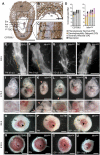
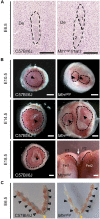
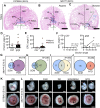

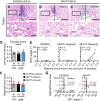
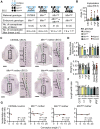
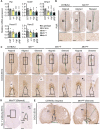
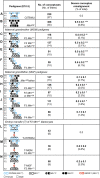
Similar articles
-
One-carbon metabolism is required for epigenetic stability in the mouse placenta.Front Cell Dev Biol. 2023 Jun 27;11:1209928. doi: 10.3389/fcell.2023.1209928. eCollection 2023. Front Cell Dev Biol. 2023. PMID: 37440923 Free PMC article.
-
Multigenerational analysis of sex-specific phenotypic differences at midgestation caused by abnormal folate metabolism.Environ Epigenet. 2017 Nov 3;3(4):dvx014. doi: 10.1093/eep/dvx014. eCollection 2017 Oct. Environ Epigenet. 2017. PMID: 29492317 Free PMC article.
-
Abnormal folate metabolism causes age-, sex- and parent-of-origin-specific haematological defects in mice.J Physiol. 2018 Sep;596(18):4341-4360. doi: 10.1113/JP276419. Epub 2018 Aug 15. J Physiol. 2018. PMID: 30024025 Free PMC article.
-
Pre-implantation conceptus and maternal uterine communications: molecular events leading to successful implantation.J Reprod Dev. 2004 Apr;50(2):155-69. doi: 10.1262/jrd.50.155. J Reprod Dev. 2004. PMID: 15118242 Review.
-
Pregnancy recognition and conceptus implantation in domestic ruminants: roles of progesterone, interferons and endogenous retroviruses.Reprod Fertil Dev. 2007;19(1):65-78. doi: 10.1071/rd06102. Reprod Fertil Dev. 2007. PMID: 17389136 Review.
Cited by
-
Feto-placental blood vessel development.Development. 2025 Jun 1;152(11):dev204838. doi: 10.1242/dev.204838. Epub 2025 Jun 2. Development. 2025. PMID: 40454573 Free PMC article. Review.
-
Effects of blastocyst elongation and implantation chamber formation on the alignment of the embryonic axis and uterine axis in mice.Front Cell Dev Biol. 2024 Jun 14;12:1421222. doi: 10.3389/fcell.2024.1421222. eCollection 2024. Front Cell Dev Biol. 2024. PMID: 38946796 Free PMC article.
-
Unveiling the Therapeutic Potential of Folate-Dependent One-Carbon Metabolism in Cancer and Neurodegeneration.Int J Mol Sci. 2024 Aug 28;25(17):9339. doi: 10.3390/ijms25179339. Int J Mol Sci. 2024. PMID: 39273288 Free PMC article. Review.
-
One-carbon metabolism is required for epigenetic stability in the mouse placenta.Front Cell Dev Biol. 2023 Jun 27;11:1209928. doi: 10.3389/fcell.2023.1209928. eCollection 2023. Front Cell Dev Biol. 2023. PMID: 37440923 Free PMC article.
References
-
- Alexander C. M., Hansell E. J., Behrendtsen O., Flannery M. L., Kishnani N. S., Hawkes S. P., et al. (1996). Expression and Function of Matrix Metalloproteinases and Their Inhibitors at the Maternal-Embryonic Boundary During Mouse Embryo Implantation. Development 122 (6), 1723–1736. 10.1242/dev.122.6.1723 - DOI - PubMed
-
- Blake G. E. T., Zhao X., Yung H. w., Burton G. J., Ferguson-Smith A. C., Hamilton R. S., et al. (2021). Defective Folate Metabolism Causes Germline Epigenetic Instability and Distinguishes Hira as a Phenotype Inheritance Biomarker. Nat. Commun. 12 (1), 3714. 10.1038/s41467-021-24036-5 - DOI - PMC - PubMed
LinkOut - more resources
Full Text Sources
Molecular Biology Databases
Miscellaneous

